Who was the mysterious man in the Pemberton Castle? A Dallas class found out.
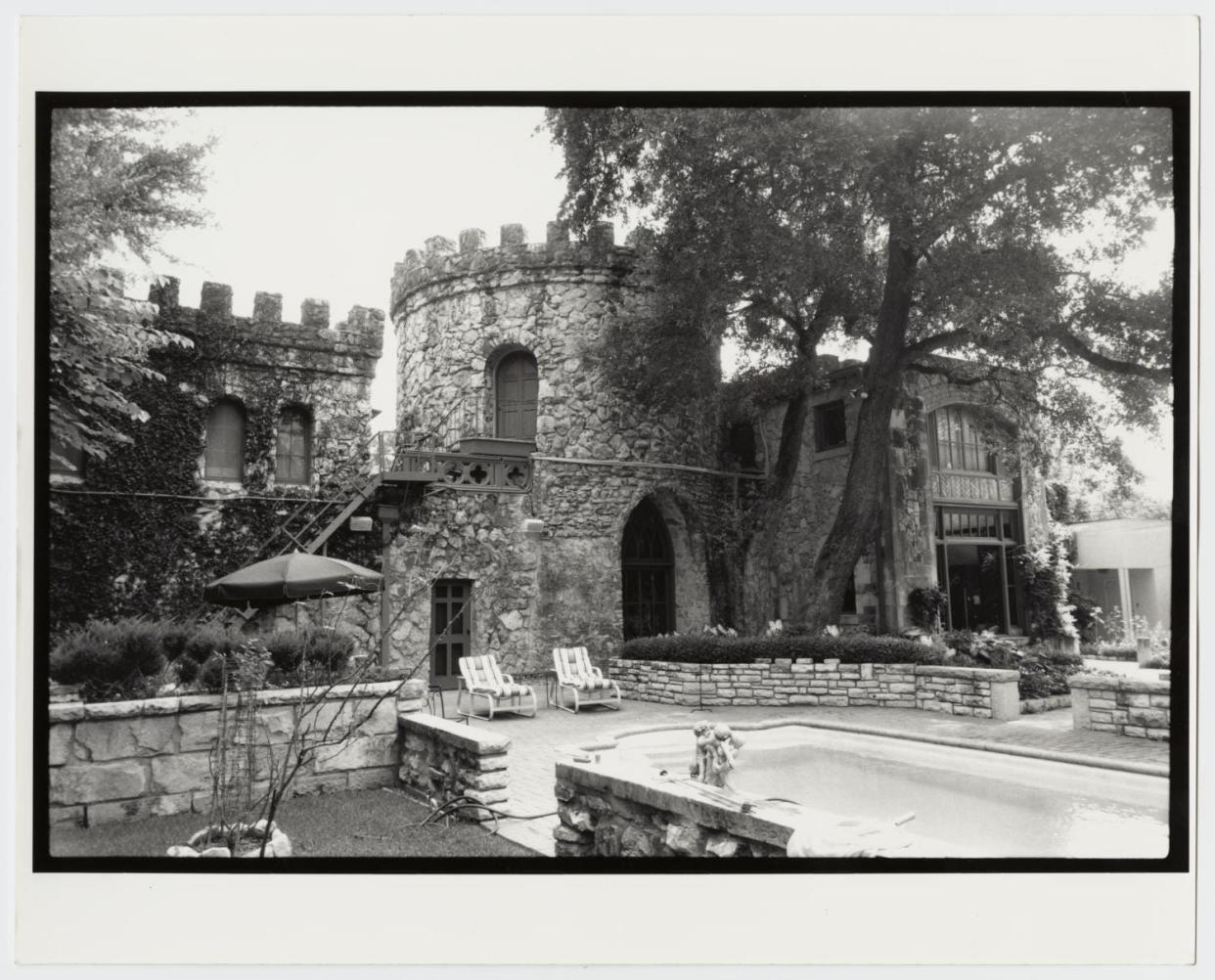
Just who was the cultured and proficient man who helped turn a cylindrical farm cistern into a fantastical castle now surrounded by the plush Austin neighborhood known as Pemberton Heights?
Recently, a small class at the University of Texas at Dallas, led by their research and writing professor, Carie King, set out to learn more about Samuel Edward Gideon (1875-1945), who lived with his wife in Pemberton Castle, home to several prominent Texans, including filmmaker Robert Rodriguez.
Not only did the students dig up and verify myriad facts about Gideon, who taught architecture at several universities for decades and painted cherished watercolors, but they also built a new Wikipedia entry that rescues this once eminent Texan from near obscurity.
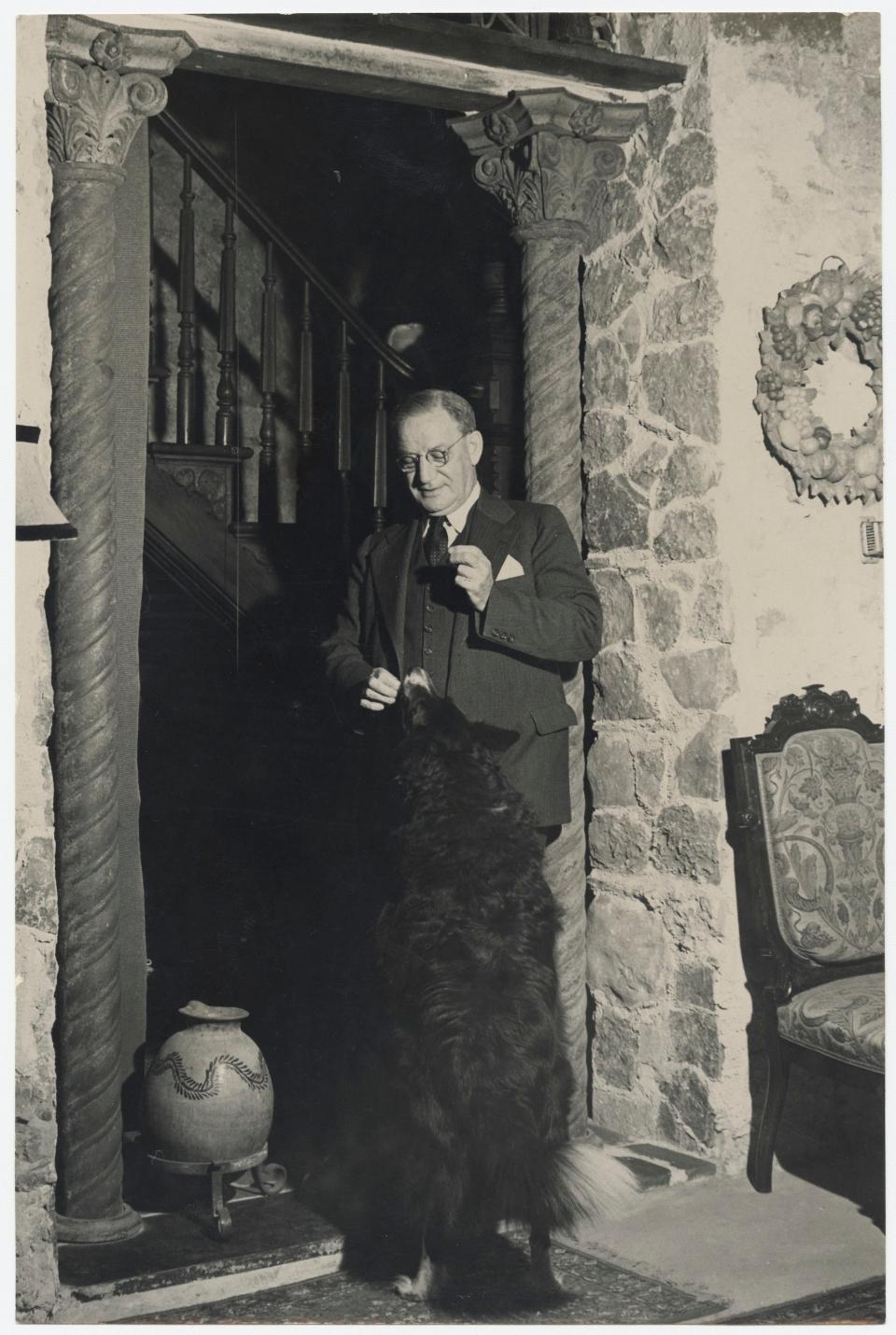
A few facts were already available about Gideon
Before the project began, some things about the Pemberton Castle builder could be discerned by way of a short Handbook of Texas Online entry, first published in 1952 and updated in 1995, and repeated on the website for the Texas State Cemetery, where Gideon was buried after his death on Aug. 13, 1945.
Born in Louisville, Kentucky, on Dec. 9, 1875, Gideon studied architecture at Harvard University and M.I.T., then graduated from the School of Fine Arts at Fontainebleau, France. He taught at M.I.T. and Texas A&M University before moving over to the University of Texas in 1913. He had married Sadie Griffin of Bryan, Texas, in 1908.
Texas History: The Texas State Cemetery shapes its identity for 21st century
Gideon published widely and served on a multitude of civic and academic bodies. He was a key player in preserving an Austin home of William S. Porter, who wrote under the pen name O. Henry. He also traveled throughout Texas and Mexico, taking pictures and painting watercolors. Along the way, he became an authority on early Texas buildings.
Gideon's papers are preserved at UT's Briscoe Center for American History. According to the center's website, the letters, clippings, articles, essays, student papers, sketches, photographs, negatives, slides and paintings come to 8.17 linear feet.
It's likely that, wherever you live in Texas, Gideon documented your town and its historic buildings during his travels in the first half of the 20th century.
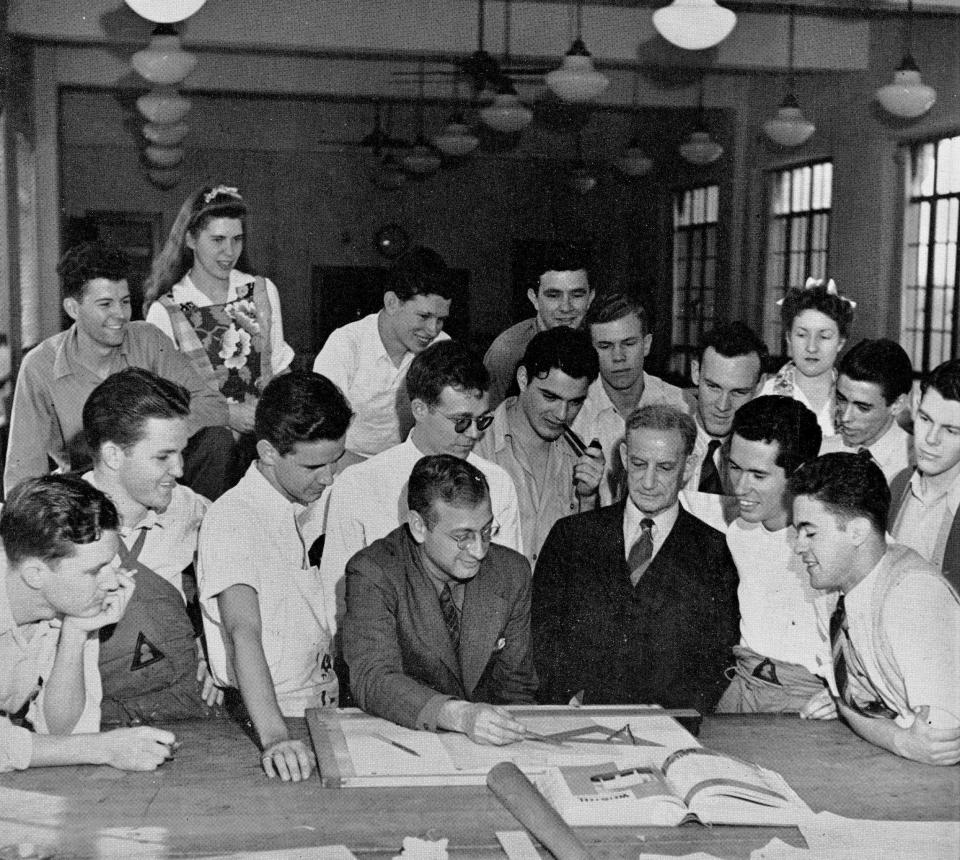
Two paintings spark the Samuel Gideon project
Despite his long career and many achievements, however, I had not heard of Gideon until an American-Statesman editor forwarded an email from King about her UT Dallas class.
What made me all the more curious was the fact that I took several architectural history classes at UT Austin during the 1980s. It's possible that some of my professors had studied with Gideon, but his name did not come up, or, just as likely, his name simply did not stick.
Dallas professor King turned out to be an incredibly generous source, and her students shared their adventures in research and writing about this slice of Texas history. For King, however, the Gideon project was a labor of family love.
Her parents, Charlie Tucker and Suzanne Holmes Tucker of Farmersville, Texas, attended UT Austin during the 1960s. In addition, her grandfather, James "Jimmy" R. Holmes Sr., was a member of the UT mechanical engineering faculty, and as a student, he studied with Gideon.
The renovation from 1990 to 1993: Photographer goes inside the skin of the Capitol
Two years ago, King's uncle, James "Jim" R. Holmes Jr., gave King two of Gideon's paintings.
"The first is one that Gideon painted in a class in which my grandparents — James Robert Holmes Sr. and Ruth Henneberger — were students" King says. "(It) is not named or signed, and oral tradition is that, because he painted it in a class in which my grandparents were students, Gideon gave it to them as a wedding gift."
The second piece of art, which her grandparents purchased, is signed, and attached to the back of the picture is a note: "Painted by Samuel E. Gideon. Watercolor. Subject: I Love a Parade. $50.00."
"I have had both paintings reframed with archive-safe backing and more modern frames, and they hang in my home," King says. "My uncle stated, 'You may have these, but if they leave the family, you must donate them to the University of Texas to be part of the Gideon collection. I hate the thought of them being crated and never seen!"
King's mother remembers seeing these paintings on the walls of her childhood Austin home. She knew that they were by Gideon, and she had been acquainted with Sadie Gideon, the professor's widow, who continued to live in Pemberton Castle until 1954.
"My mother and uncle still talk about Professor Gideon," King says. "Growing up, when my family visited Austin, we would drive by Pemberton Castle and my mother would tell us stories about him. My Uncle Jim remembers riding with his father to Pemberton Castle and sitting in the family car while his father went inside the house to talk to Mr. and Mrs. Gideon."
An artist lost, then found: Austinite unearths history of her grandmother, impressionist painter Anna Huntington Stanley
Even though Gideon was a respected historical architect and Texas artist, she found little about him in the public record.
So he became a perfect subject for her advanced writing and research class.
"I typically try to find a topic with a personal archive so the students can search online archives, or access an archive I have photographed or scanned, and gather information related to the individual," King says. "The students love the assignment, even though it is one of the most challenging projects they have ever undertaken."
In this case, unearthing more about the subject came with some enormous obstacles.
"The Gideons had no children, and even though we found distant relatives, we did not find anyone we could contact who might be able to answer our questions," King says. "Additionally, Wikipedia requires primary sources, rather than original data — such as interview results — so I had the students pursuing research in historic archives, rather than calling on people for original information."
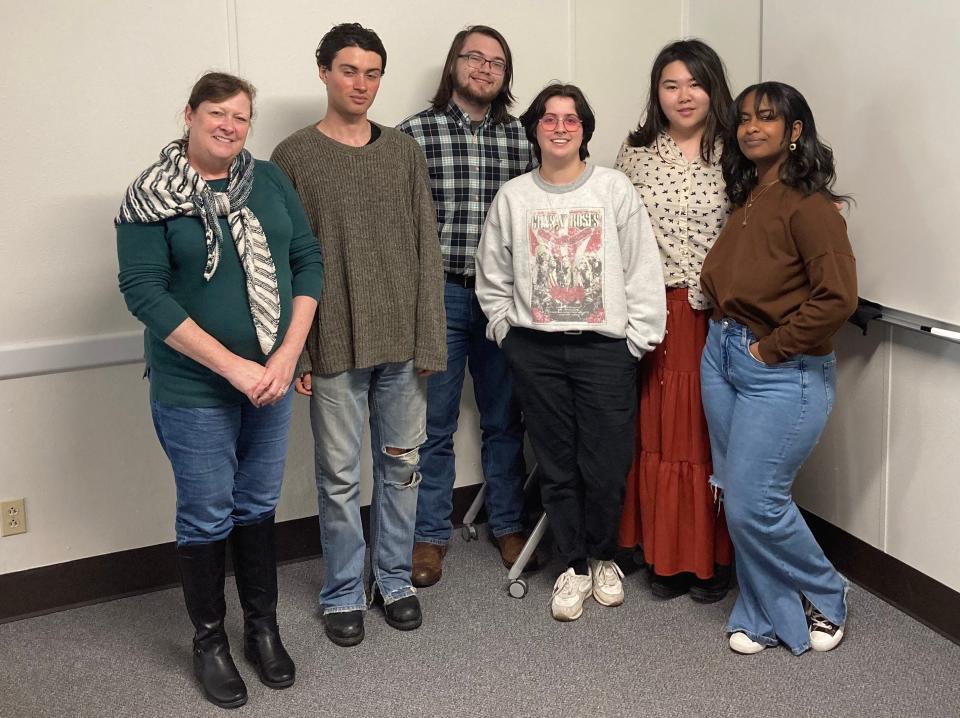
What the project meant to the college students
Copiously sourced, the Wikipedia page produced by King's students not only greatly increased the published facts about the Texan, it changed the students.
"I was completely unaware of the detective work I would do and the interesting stories that I would experience," says junior Shane M. Russo. "I learned very quickly how to search through old newspapers for any sort of information that may be valid for our research. The search felt like uncovering a mystery with the pieces laid out all over."
The students came to the subject with questions.
"I was wondering, 'Who is this guy?'" says junior Malu Yitages. "I wondered why we were researching him, because I had never heard of him, and he had not been studied extensively.
"I learned how to take initial resources and expand those resources to find additional resources — almost like connecting the dots," Yitages continues. "Much of the information about him was posted on art auctions with no cited sources, so it was our job to find the original sources. I loved contacting MIT’s and Harvard’s libraries to find direct sources."
Yitages is already applying these methods to other assignments.
"When this Texas scholar was first introduced to our class, I had no prior knowledge about him," says senior Akie M. Kasai. "But we spent a whole semester researching him, and I realized how fun researching with historic figures and people from the past can be."
Kasai used databases to which the UT Dallas Library has access.
"I learned how helpful libraries are by communicating with the University of North Texas Library, the Boston Public Library and the MIT Library for resources," Kasai says. "We have enjoyed helping each other and providing moral support in the process. Teamwork and research are skills I can use in future projects, classes and jobs."
Sophomore Evan E. Gomillion thought it was fascinating that not much modern study had ever been made of Gideon.
"Knowing the most efficient way to organize research and content is definitely helpful," Gomillion says, "but this project also taught me how to become passionate about what I am researching. Applying that same excitement to my future projects will improve the standards I set for myself."
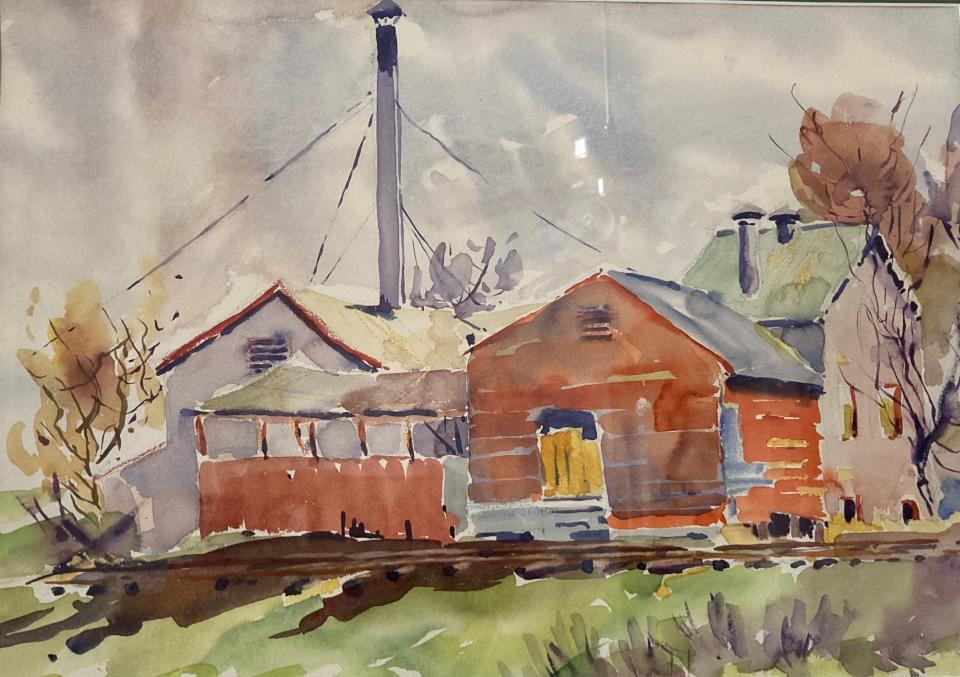
Historical tidbits that the UT Dallas students discovered
The Samuel E. Gideon Wikipedia entry is substantial. I've cherry-picked some facts. And corrected one.
At UT, Gideon gave lectures about World War I, such as “The Art of Camouflage,” "Rheims Cathedral" and “Some Belgium and French buildings in Path of War.”
As an artist, Gideon attracted collectors from Mexico to Europe. He painted landscapes and historical subjects, but focused on buildings, such as the Alamo and the Spanish missions in California.
He served as the secretary of the Texas Fine Arts Association, one of the entities that evolved into the Contemporary Austin. He chaired the Central Texas Branch of the Landmarks Preservation Committee, and he made illustrated brochures on Austin and its buildings. (I'd dearly like to see those rarities.)
Gideon influenced F. E. Gieseeke, the chief architect of Texas A&M University. Gideon designed the Civil Engineering Building and the Academic Building. In 1995, when A&M began to renovate older buildings, those projects restored some of the original 1913 designs by the two men.
Gideon advised prominent physician, Dr. Z.T. Scott and his wife, Sallie, who moved the deteriorating Swisher Home from downtown Austin to a spot overlooking what is now Lake Austin. The 1852 house, dubbed Sweetbrush, put together by Austin master builder Abner Cook, was moved brick by brick to the new property from the late 1920s to 1931. The Scotts' son, future Hollywood star and theater namesake Zach Scott, helped clean the bricks. (Note: At first, the Wikipedia incorrectly ascribed the whole project to the actor, who was only a teen at the time. It has been corrected.)
Gideon was particularly dedicated to the study of American writer O. Henry, and, because of his advocacy, the O. Henry home, originally located at 308 East Fourth Street, was moved to 409 East Fifth Street and was repurposed as the O. Henry Museum.
Gideon also pushed to conserve Texas trees as landmarks and also as a part of Texas heritage.
What about the Pemberton Castle?
If you have ever stumbled on the stone castle at 1415 Woodridge St. in the middle of Pemberton Heights, you can't forget this fabulously eccentric fantasy home. Surely, you paused to think: "Who came up with this?"
Now you know. I've written about it several times, but did not know the Gideon connection. King's class informed me.
In the 1890s, the Fisher family added a cylindrical stone cistern to the farm that lay on the western side of Shoal Creek, land isolated from the city by the dearth of bridges over the creek. Thirty years later, Samuel Fisher added limestone wings and converted it into a whimsical sales office for the new Pemberton Heights subdivision.
The Gideons purchased the castle in 1937 and turned it into a gracious home. Some of the building materials came from the Old Main building on the UT campus, which was replaced by the Tower; slate from the Home Economics Building; stones from the O. Henry House, and a staircase from Bishop Kinsolving house on Whitis Court.
On top of everything else in his life, it turns out that Gideon, who was much more than the mysterious man in Pemberton Castle, was an early Texas advocate of recycled materials and sustainable architecture.
Michael Barnes writes about the people, places, culture and history of Austin and Texas. He can be reached at mbarnes@statesman.com. Subscribe to the free weekly digital newsletter Think, Texas at statesman.com/newsletters, or at the newsletter page of your local USA Today Network paper.
This article originally appeared on Austin American-Statesman: Samuel Gideon? Dallas college class explains Austin artist and scholar

